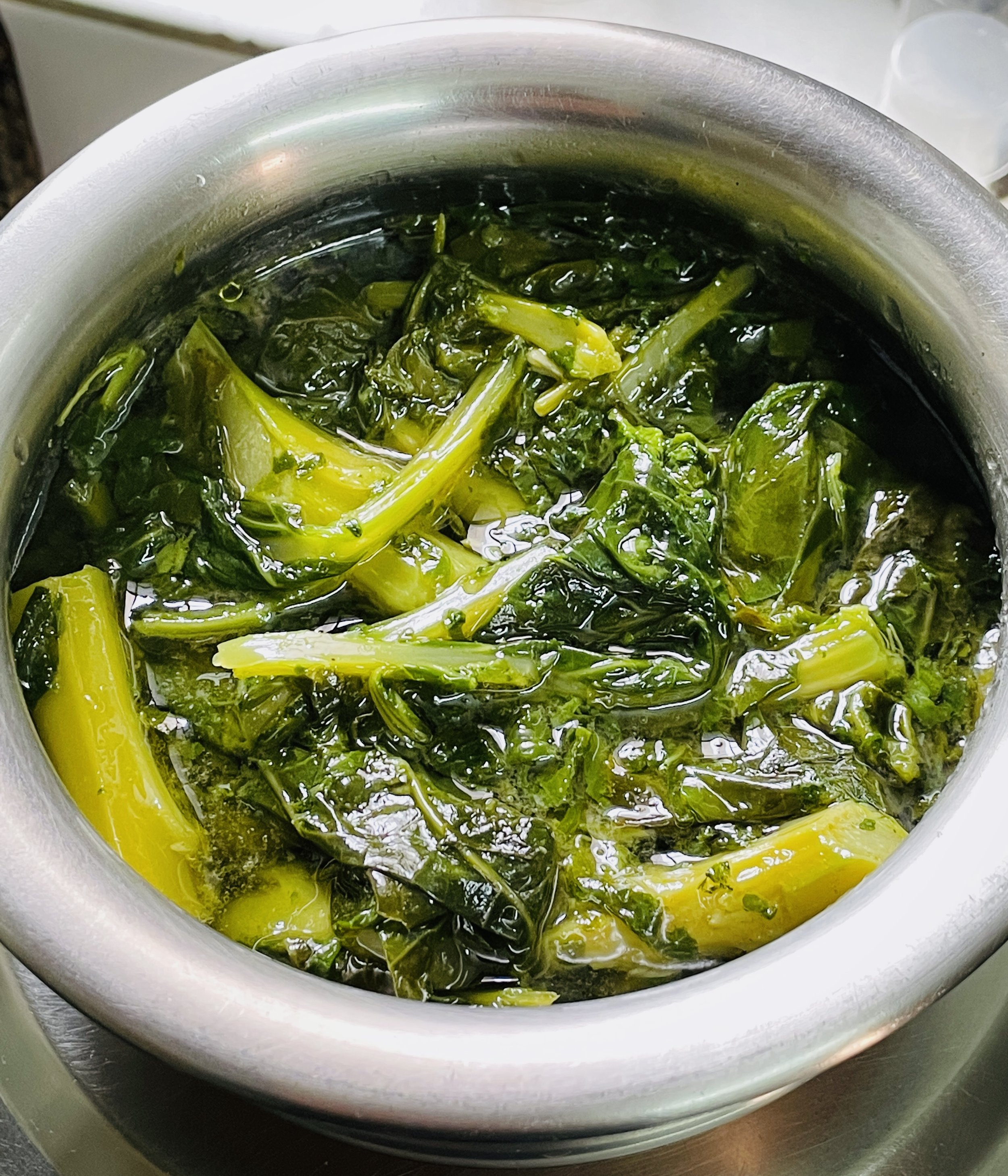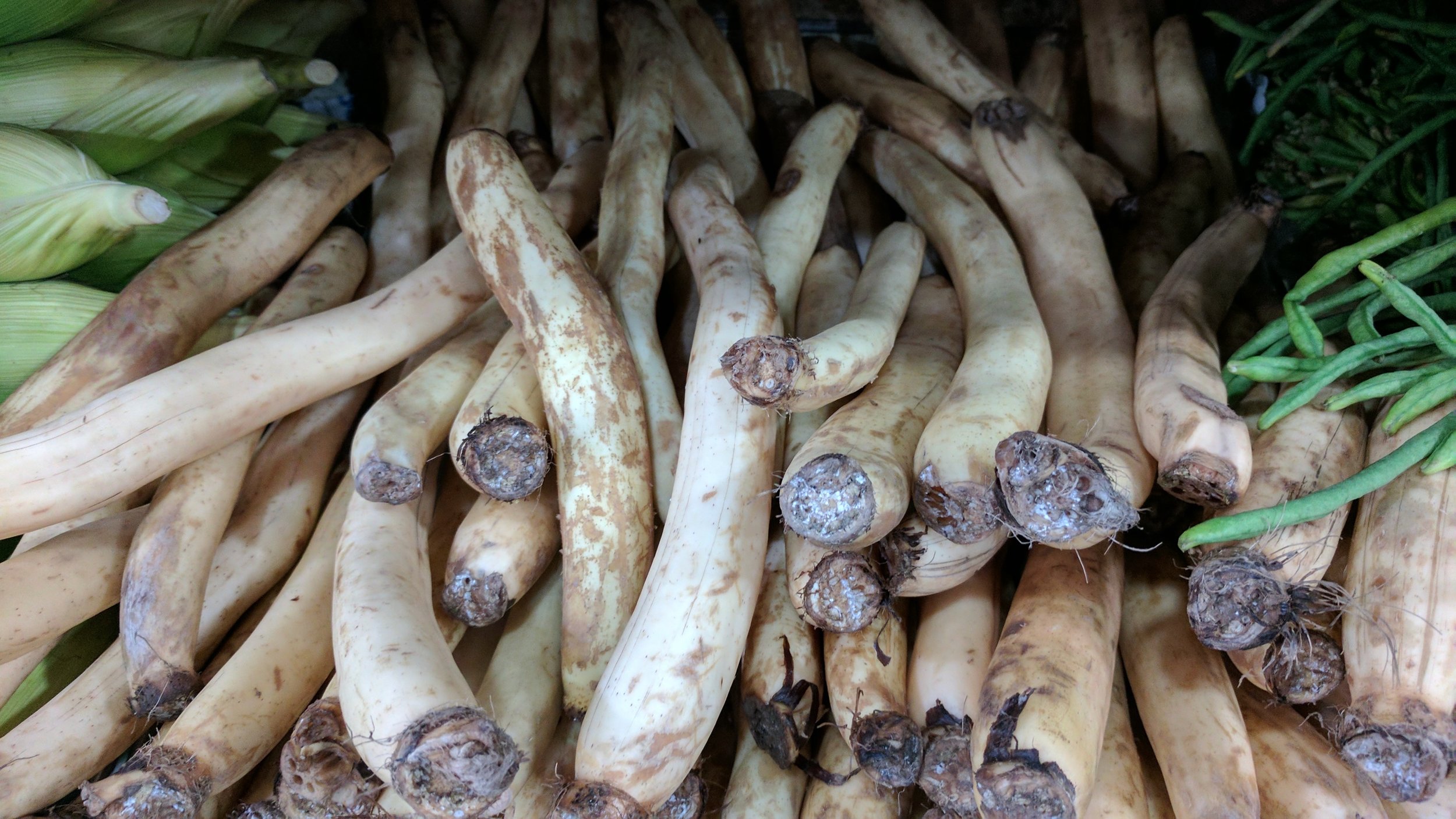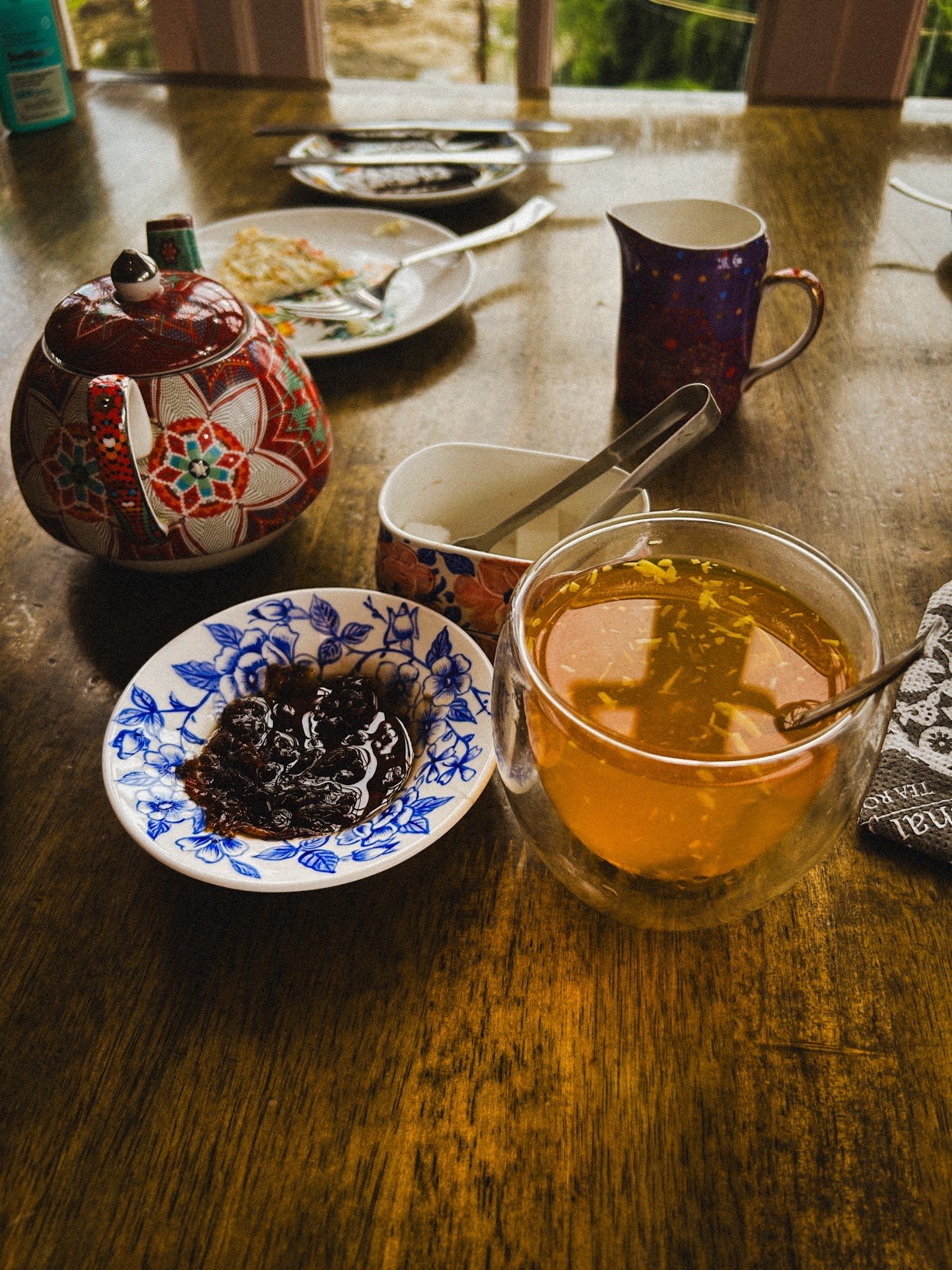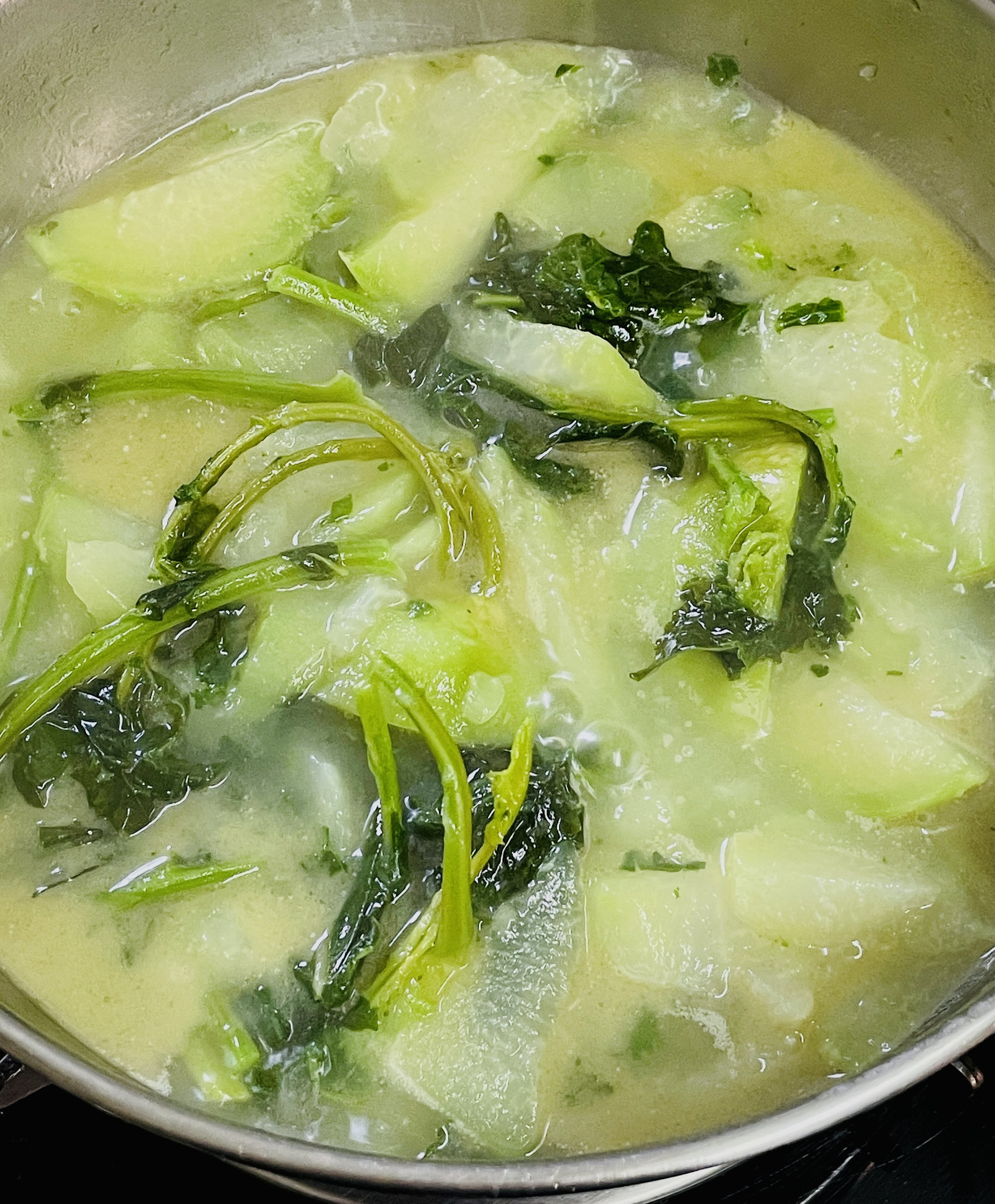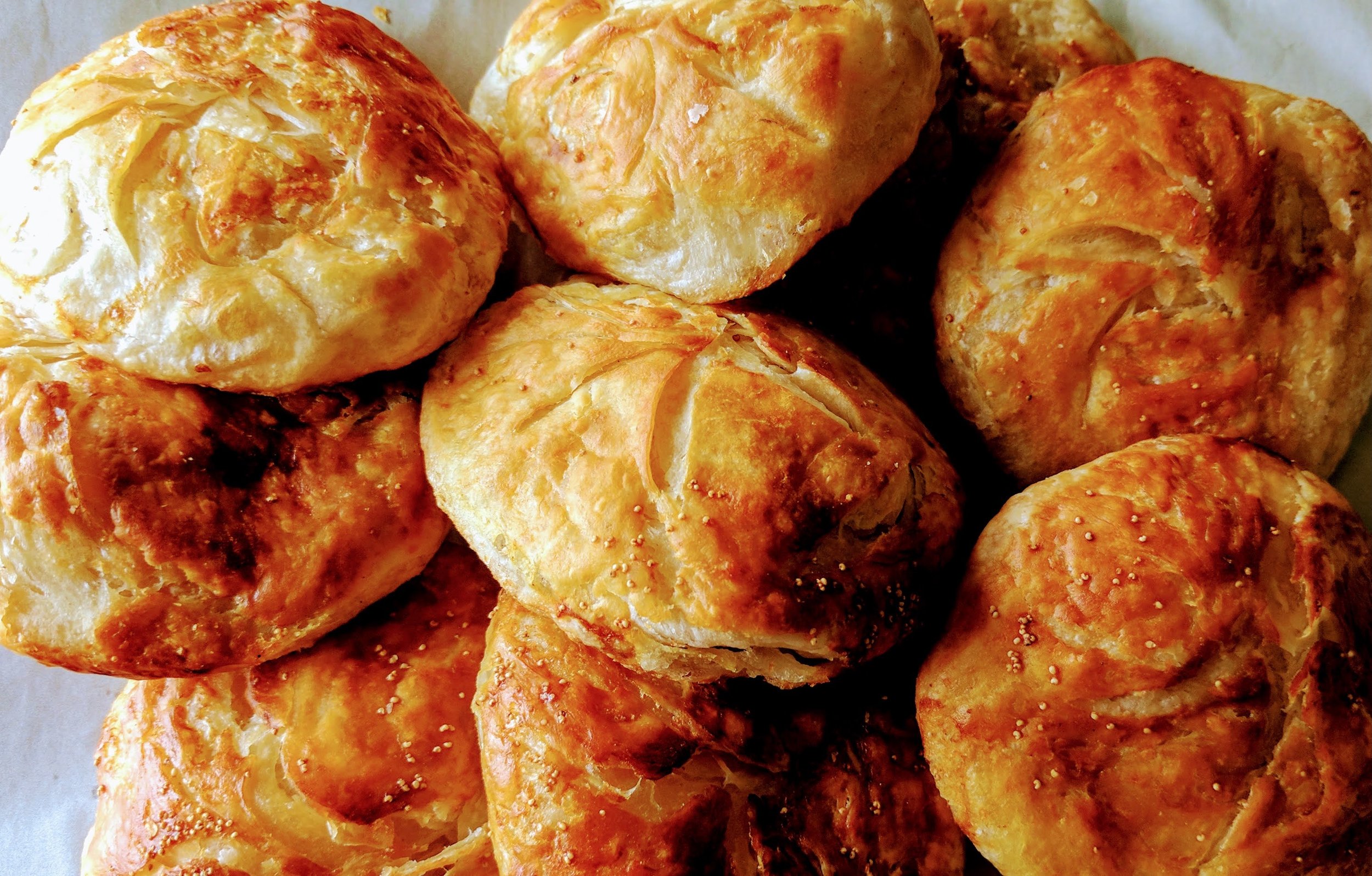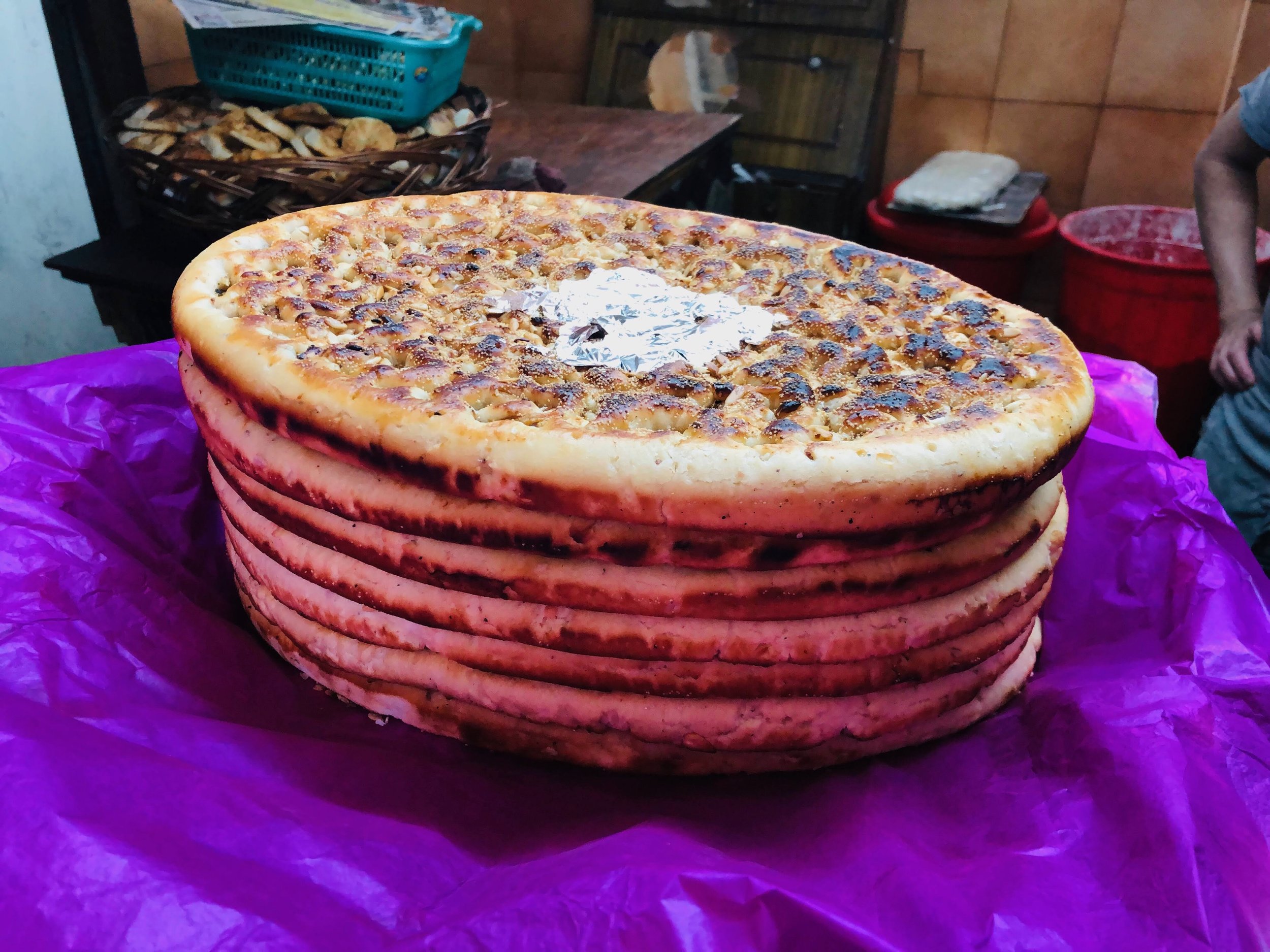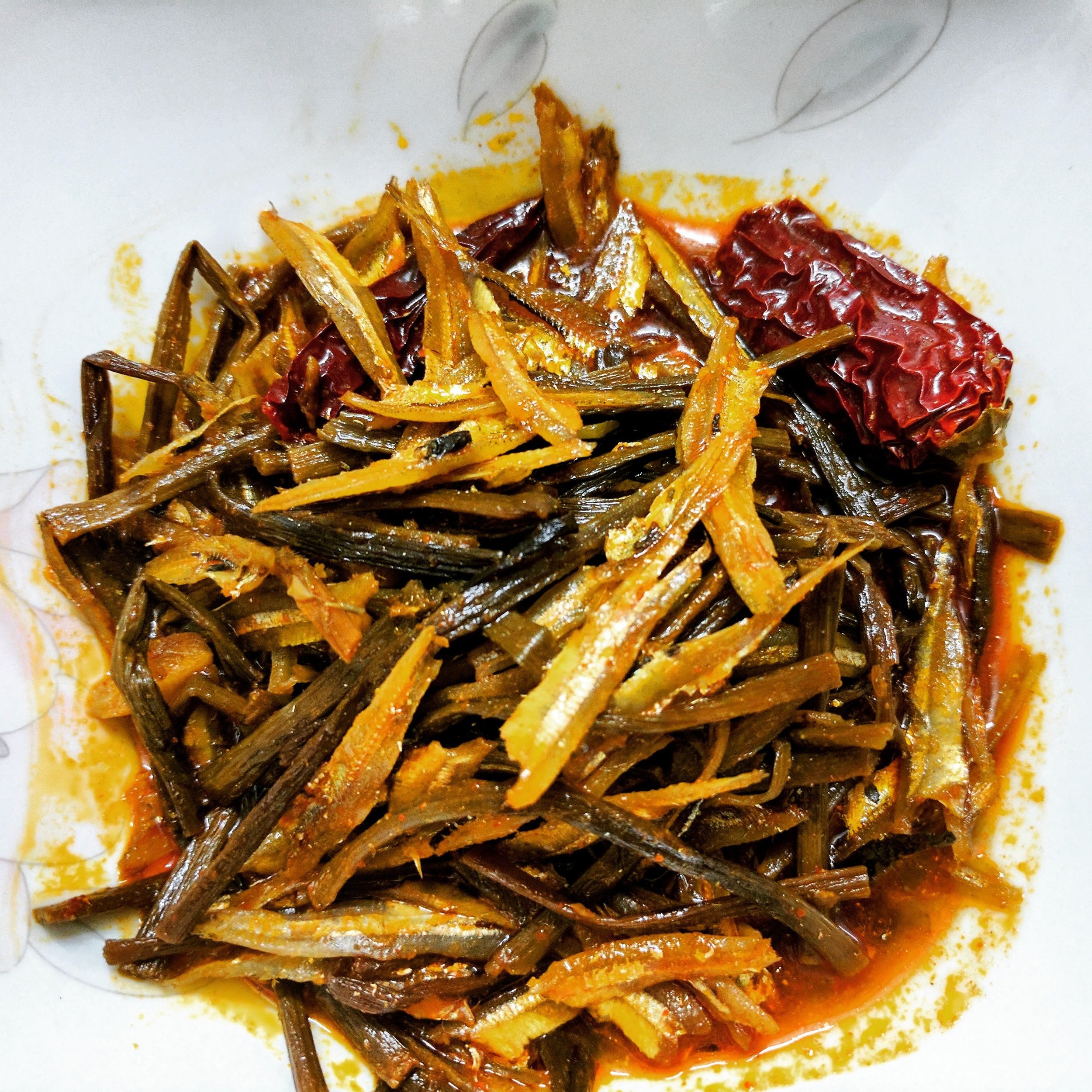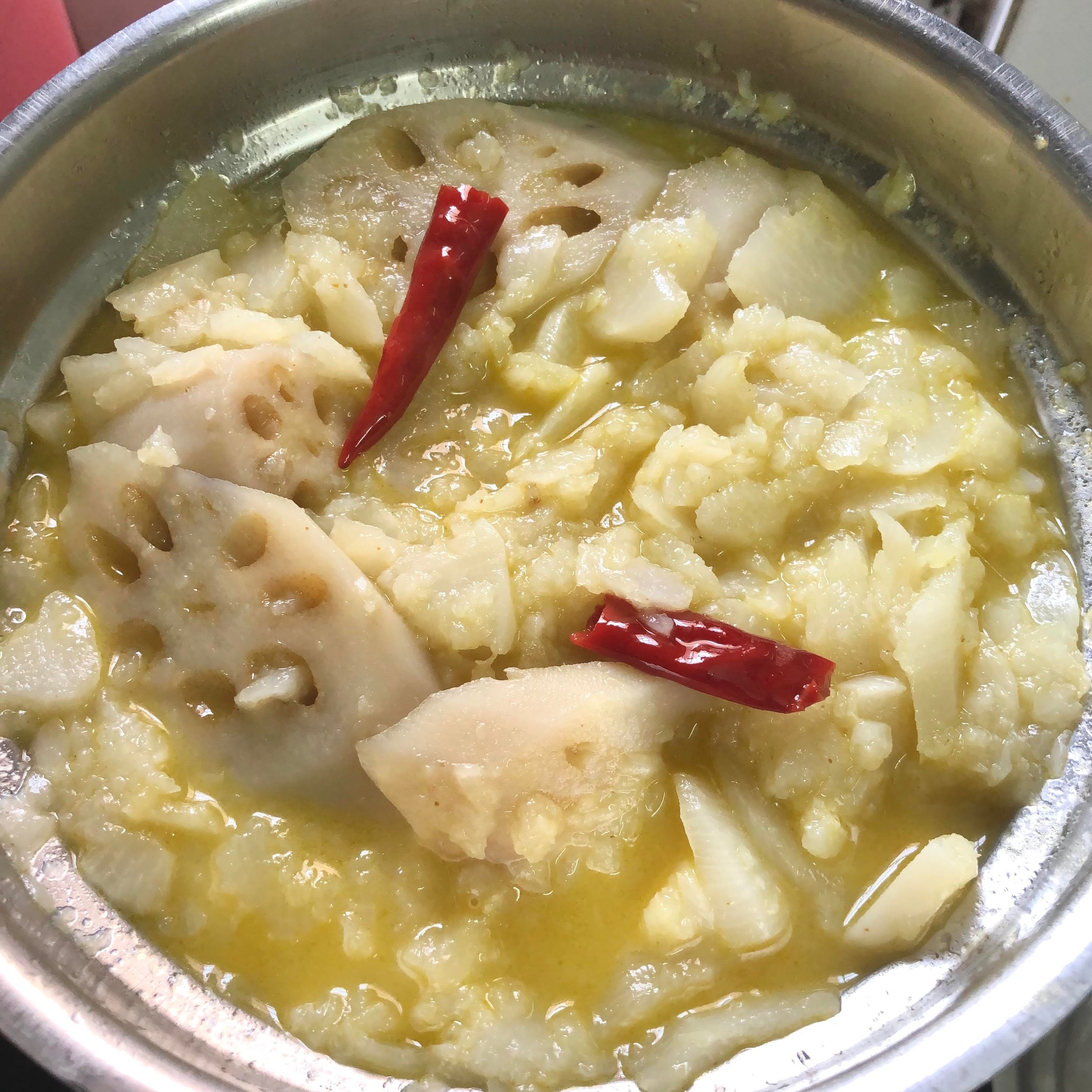Kashmiri Pandit Cuisine
Explore the rich flavours of Kashmiri Pandit Cuisine! This repository include various dishes, drinks, breads etc. We will expand onto Waazwan after more research is conducted
NADRU
Nadru gained popularity in Kashmir around the 15th century when the ruler, Badshah Ghiyas-ud-Din Zain-ul-Abidin, encountered the lotus plant during a shikara ride on the Gul Sar, now known as the Gill Sar, a lake on the outskirts of Srinagar.
Nadru, a porous and fibrous lake vegetable, grew to become an irreplaceable ingredient in a traditional Kashmiri kitchen. From everyday meals to festivals, Nadru’s earthy and rich texture allowed it to be very versatile and used in multiple ways during cooking
Nadru can be cooked in many ways: one of the most common is Nadru Yakhni (cooked using yogurt).
KANNGUCCH
Popularly known as 'Morel Mushrooms' all across the world and Morchella Esculenta scientifically, 'Gucchi Mushrooms' is a variety of wild mushrooms found in the forests of Jammu and Kashmir.
Stories have come up about how they are sown by thunder and lightning, or grow best in areas that have suffered forest fire, but there is essentially no alternative to looking carefully for their well-camouflaged caps.
In Kashmiri cooking, they are diced and then tossed gently with mild spices to retain the natural flavour and earthy aroma. They are most commonly used in pulaos.
SHEER CHAI
Noon chai, or pink tea, the traditional Kashmiri tea is believed to have come to Kashmir from Turkestan. Kahwa, another popular drink of Kashmir, is believed to have come to this region through the Spice Route. This tea is said to have originated in the 2nd century AD during the rule of the Kushan Empire.
YAKHNI
Yakhni came to be known in Kashmir during Akbar's rule. Yoghurt-based meat curries were common in Persian cuisine. The Emperor introduced this style of cooking to his new state when he annexed it in 1586.
Yakhnis can be meat based such as meat yakhni or it can be used as a preparation method for vegetable dishes too such as Nadru Yakhni and Al Yakhni.
NADUR MONJI
Nadur monji or nadir monji is a fried snack (fritter) prepared from lotus stem and gram flour. Originating in Kashmir, it is found across South Asia.
The main ingredients used are lotus stem, rice flour, salt, and kashmiri red chilli powder.
This is served frequently during weddings, festivals, and gatherings
KEHWAH
The Kashmiri kahwah is made by boiling green tea leaves with local saffron, cinnamon, cardamom and occasionally Kashmiri roses. It is generally served with sugar or honey and crushed nuts, usually almonds or walnuts. Some varieties are made as a herbal infusion only—without the green tea leaves.
Traditionally, kahwah is prepared in a copper kettle known as a samavar. A samovar, which originates from Russia, consists of a fire container, in which live coals are placed to keep the tea warm. Around the fire container there is a space for water to boil and the tea leaves and other ingredients are mixed with the water.
While its exact origins are unclear, kahwah tea leaves are said to have come to Kashmir through the Spice Route (which Kashmir was a central point of). Many believe that it originated during the Kushan empire in the first and second century AD.
The word Kahwah in Kashmiri means "sweetened tea", the word also seems to be related to the Turkish word for coffee (kahveh) which in turn might be derived from the Arabic word "qahwah."
MONJ
Monj is known as Kohlrabi in English. It is a combination of German words kohl meaning cabbage and rabi meaning turnip, although native to Europe, is a celebrated vegetable in the Kashmiri cuisine in India. This stew-like preparation of kohlrabi using Kashmiri culinary style is simple yet delicious.
Much like haak, monj can also be considered a staple food for Kashmiris
KATLAM
Katlam is one of the many breads found at a kandru (kashmiri baker).
It is a flaky round, patty like bread, typically eaten as an evening snack with either sheer chai or kahwah.
TEILVUR
Teilvur is what would be considered a Kashmiri bagel.
Smaller than a traditional bagel, but retaining the basic form and ingredients, a teilvur is a perfect food for breakfast or as a snack. Can be consumed with various condiments.
ROTH
Roth is a fried sweet bread typically known for its cooking during the Kashmiri festival of Pann.
Roth is used as an offering during the festival. Roth can also be consumed apart from that and is found at kandrus too. However the kandru roth is fancier due to its bigger size and the usage of dry fruits.
HOGAAD
The name Hogaad comes from ho- from hoakh – dry, and gaad – fish.
Hogaad are tiny dried fish cooked with vegetables to increase nutrient content or simply cooked with oil and spices and served as a side dish.
KABARGAH
Kabargah are fatty ribs boiled and cooked in milk and spice till tender and then dipped in curd marinate, and fried in pure ghee.
They are served as a starter or a snack, usually at family gatherings or events.
GOGJI NADRU
Gogji Nadru is a dish made combining two separate vegetables that have their own independent dishes.
The sweetness of the Gogji adds to the earthiness of the Nadru, making a whole unique dish loved by many! Taste’s best with dahi (curd) and rice.
